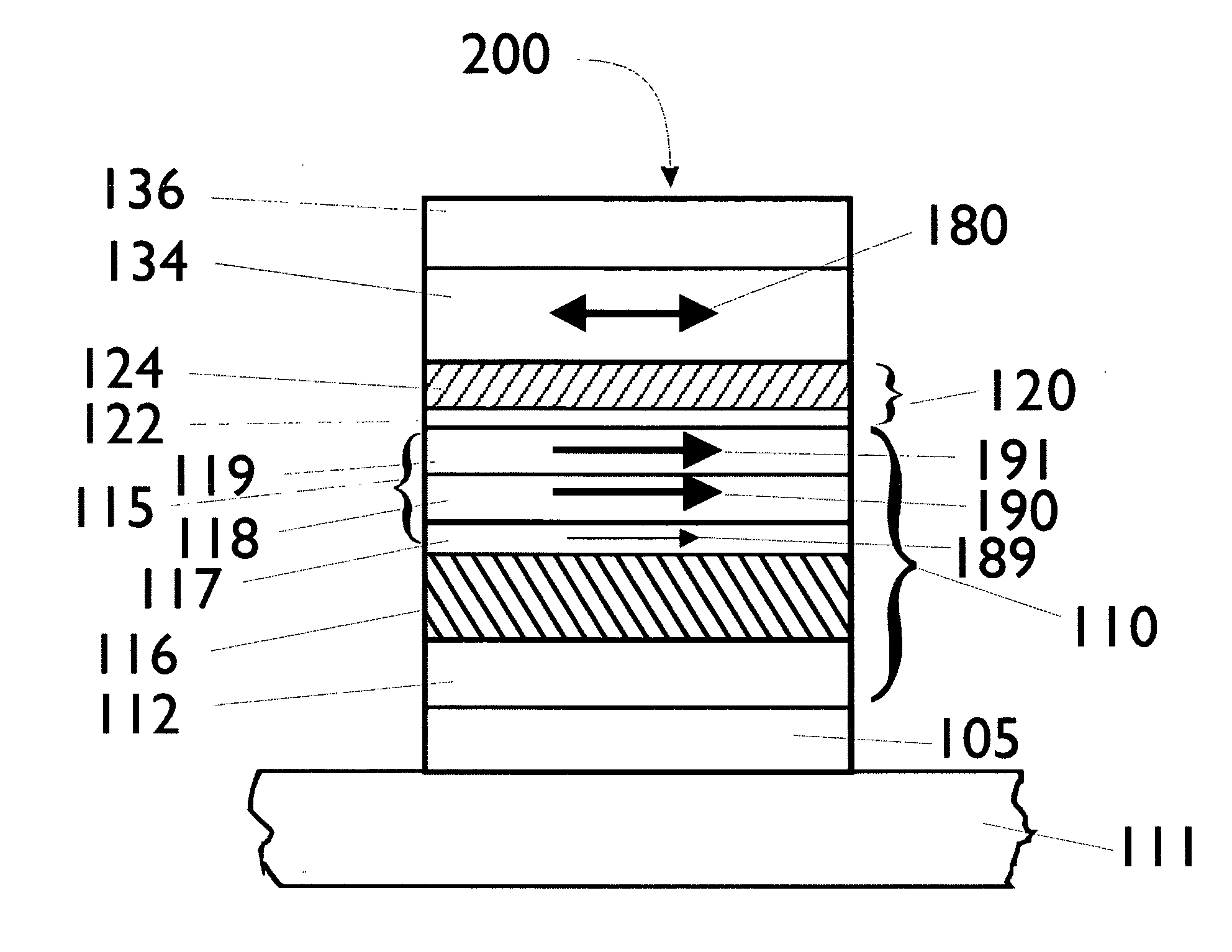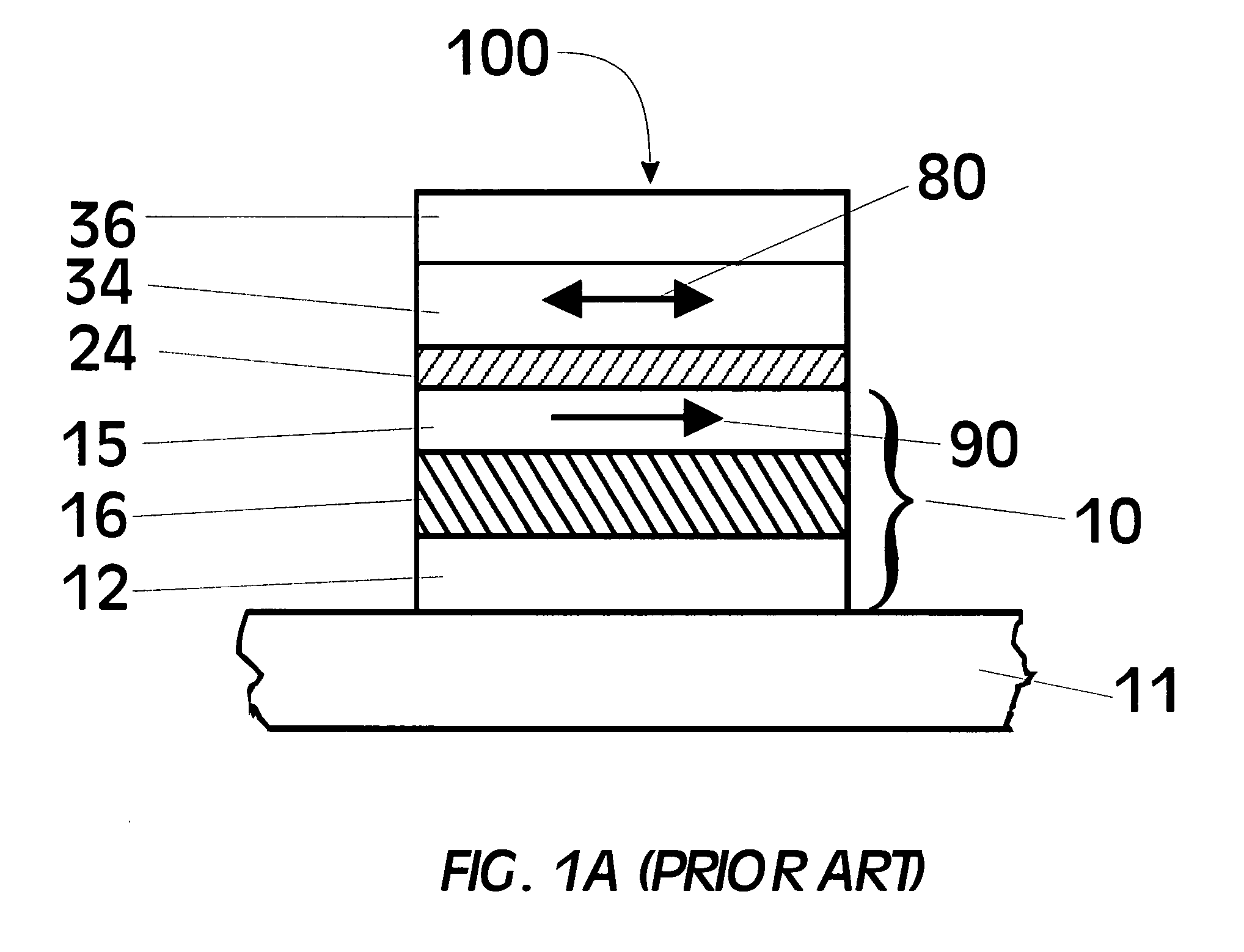Tunnel barriers based on rare earth element oxides
- Summary
- Abstract
- Description
- Claims
- Application Information
AI Technical Summary
Benefits of technology
Problems solved by technology
Method used
Image
Examples
Embodiment Construction
[0023] The tunneling current in an MTJ is spin polarized, which means that the electrical current passing from one of the ferromagnetic layers is predominantly composed of electrons of one spin type (spin up or spin down, depending on the orientation of the magnetization of the ferromagnetic layer). The tunneling spin polarization P of the current can be inferred from a variety of different measurements. The measurement most relevant to magnetic tunneling is to measure the conductance as a function of bias voltage for junctions formed from a sandwich of the ferromagnetic material of interest and a superconducting counter electrode (R. Meservey and P. M. Tedrow, Phys. Rep. 238, 173 (1994)). These studies show that the spin polarization of the tunnel current measured in this way can be simply related to the TMR close to zero bias voltage as first proposed by Julliere (M. Julliere, Phys. Lett. 54A, 225 (1975)). In such a model P is defined as (n↑−n↓) / (n↑+n↓), where n↑ and n↓ are the de...
PUM
 Login to View More
Login to View More Abstract
Description
Claims
Application Information
 Login to View More
Login to View More - R&D
- Intellectual Property
- Life Sciences
- Materials
- Tech Scout
- Unparalleled Data Quality
- Higher Quality Content
- 60% Fewer Hallucinations
Browse by: Latest US Patents, China's latest patents, Technical Efficacy Thesaurus, Application Domain, Technology Topic, Popular Technical Reports.
© 2025 PatSnap. All rights reserved.Legal|Privacy policy|Modern Slavery Act Transparency Statement|Sitemap|About US| Contact US: help@patsnap.com



